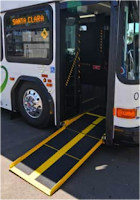Sub-Team:
Since last class meeting on September 16, 2015, I have been looking at the painting methods for the full-scale cabin. The group was notified that the students and an ambassador from Sweden will be coming to see the project. Ron Swenson noted that it would be a good idea to finish up the work that the Swedish students had done over the summer. The full-scale group collaborated with Caleb Kalala Kabeya via discussion in class time and email. Caleb contacted the Swedish students to see if they had preference in color scheme for the cabin that they built. We also discussed times when we could get together to do the finish work. Work that needs to get done is as follows: sanding, adding more bondo (if needed), priming (if needed), painting, and possible second coat of paint.
Full-Team:
As head librarian for the Spartan Superway, I have been trying to look for resources and references for the project. The main goal is to find a way or location site to organize all the work done over the years in a central location. This will help the current and future teams when they needed to reference current or past information. This will replace having to ask around or emailing documents.






